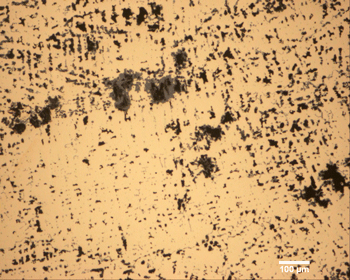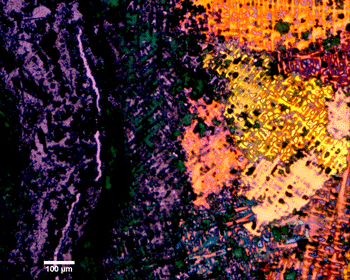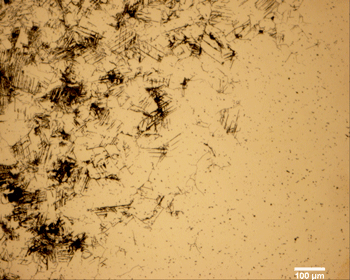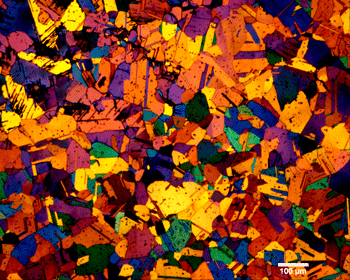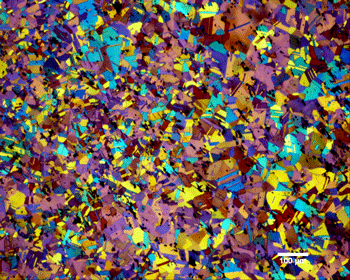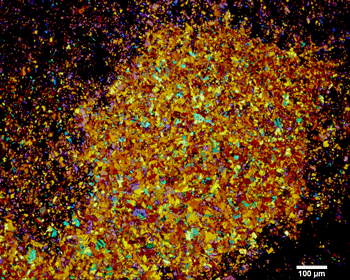Hasanlu is an early Iron Age settlement located in northwestern Iran. It dates back to the second millennium B.C., ~1450 B.C., until it was destroyed around 800 B.C. Although the site attracted the attention of the British archeologist Sir Aurel Stein due to artifacts recovered from burial mounds in the 1930s, it was not given substantial attention until the discovery of the “Hasanlu Golden Bowl” in 1958. The Hasanlu archeology project began in 1957 and was greatly stimulated by this discovery. It ended in 1977. The excavations were sponsored by The University of Pennsylvania Museum and the Metropolitan Museum of Art of New York in cooperation with the Archeological Service of Iran.
The author obtained six specimens from the University of Pennsylvania Museum. The six specimens consisted of three cast (No. 1) and three wrought bronze bracelet sections (Nos. 2-4), as defined in Table 1. The three cast specimens were from the same bracelet.
|
Table 1. Chemical Analysis of the Bracelets (weight percent)
|
For simplicity, they will be referred to as specimens 1, 2, 3 and 4. As there are three specimens of the cast bracelet in mount 1 (HAS 60-617), they will be referred to by their size. The chemical analysis shows that they are similar in composition although the tin content of the fourth specimen is somewhat higher than the other three.
Cast Bracelet Specimens
There were three in the mount and they will be referred to as large, medium and small based on their size. All contained shrinkage cavities and their surfaces were corroded due to years of burial, Fig. 1. All of the specimens exhibited substantial surface corrosion, which was often (in the wrought specimens) along the grain and twin boundaries (see Fig. 2). The wrought structures were all annealed after forming as evidenced by their equiaxed, twinned grain structures, Figures 2 and 3. Not shown here is the substantial corrosion attack in the wrought specimens, particularly number 4. Figure 3 (right) shows the extreme center of this specimen and it can be clearly seen that even at low magnification, the entire field of view cannot be filled with non-corroded matrix microstructure. The interior microstructure, revealed by color etching with Klemm’s III, shows that the grain size of bracelet specimen number 4 was much finer than that of wrought bracelet specimens 2 and 3. But, this study shows that the metallurgists at Hasanlu had an understanding of hot working and annealing.
George Vander Voort has a background in physical, process and mechanical metallurgy and has been performing metallographic studies for 47 years. He is a long-time member of ASTM Committee E-4 on metallography and has published extensively in metallography and failure analysis. He regularly teaches MEI courses for ASM International and is now doing webinars. He is a consultant for Struers Inc. and will be teaching courses soon for them. He can be reached at 1-847-623-7648, EMAIL: georgevandervoort@yahoo.com and through his web site: www.georgevandervoort.com
To View a listing of all George’s articles please click here
Read George Vander Voort’s Biography

